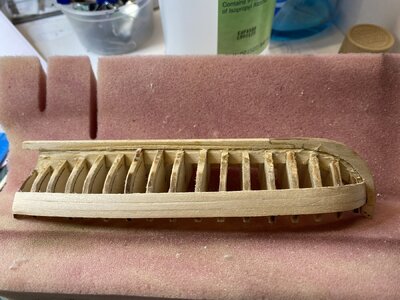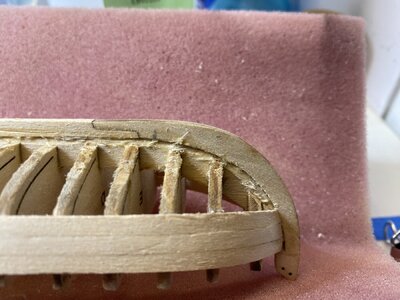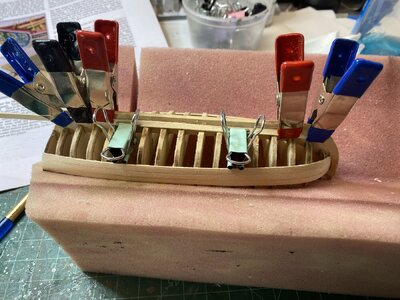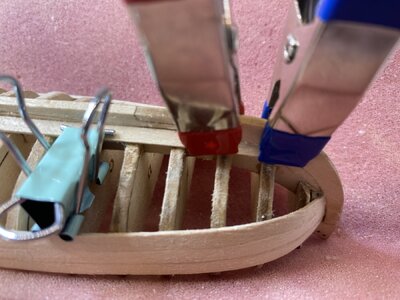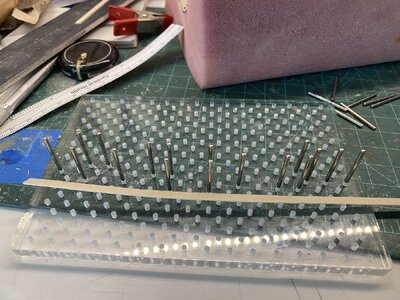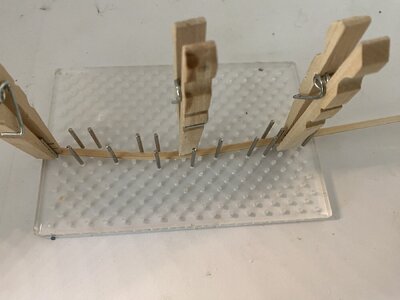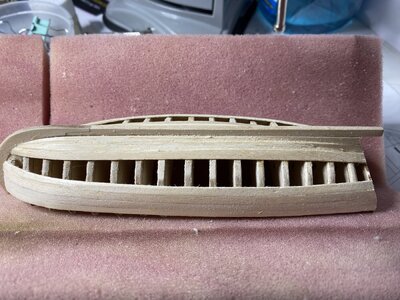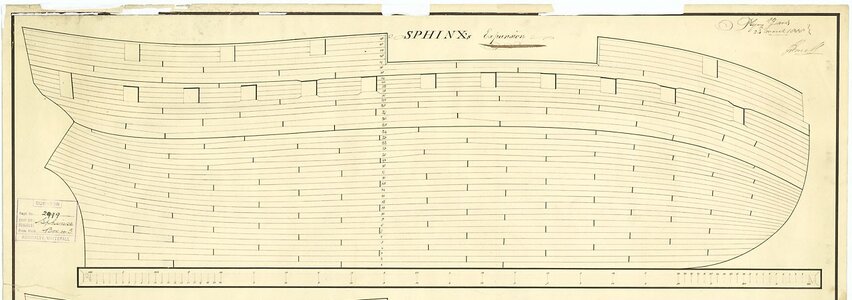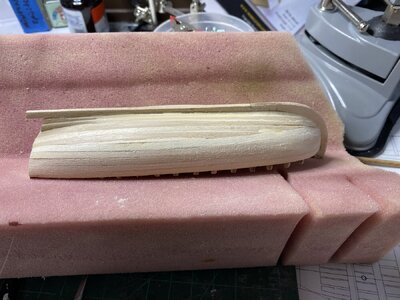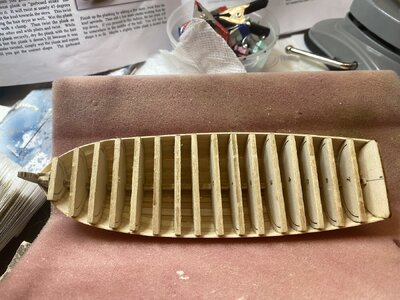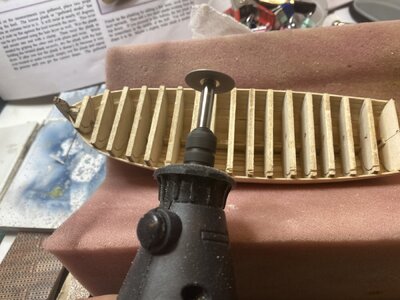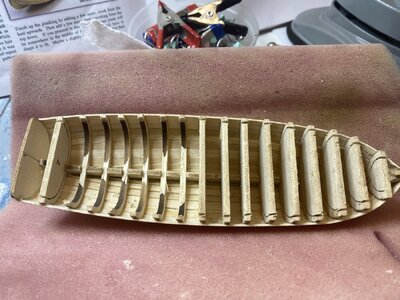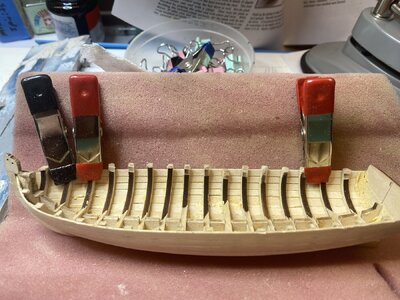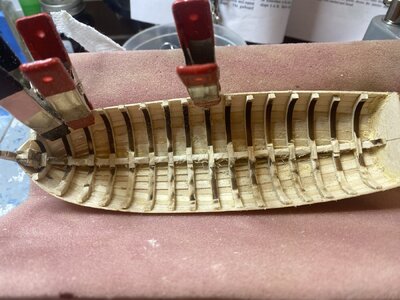As long as you accept this, it will be accepted by us! This has happened because you didn't place the 'garboard' (the first plank from the keel) plank in the right place. The next time (unless you consider to redo), It would be best if you moved it close to the second bulkhead. Also, you may consider tapering planks close to the bow area.To lessen the curve in the bow, I am considering using "Cheater" planks as pictured below. Do people think this is acceptable?
View attachment 445202
Garboard Plank
Not sure on trim the Garboard plank? I soaked the plank and placed on the bulkheads to get the shape. Question is to I cut the plank where the arrows are pointing to?
shipsofscale.com

The Planking Process: From the Garboard Up - Mastering Skills with the WoodenBoat School
Now that the upper part of the hull is planked, it’s time to plank up the bottom, starting with the lowermost plank called the garboard. Put aside the diminish board,...
Fitting the Garboard Planks
 www.bob-easton.com
www.bob-easton.com




